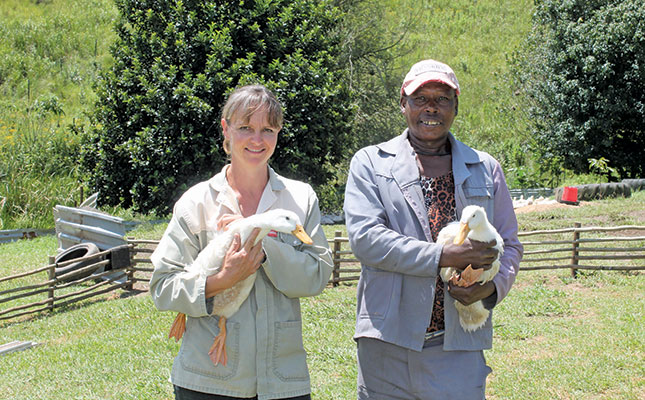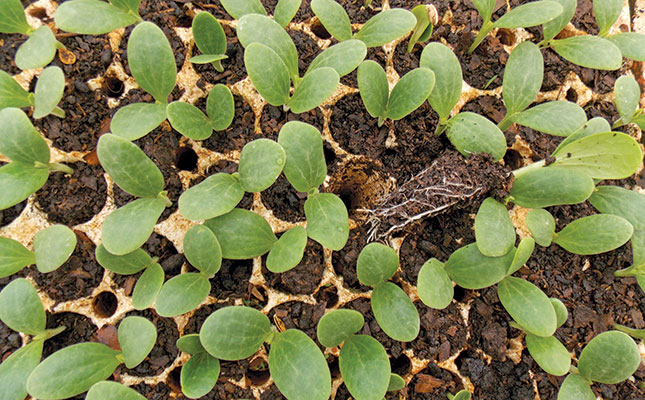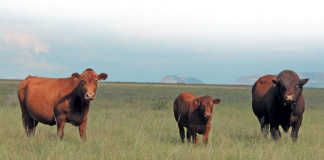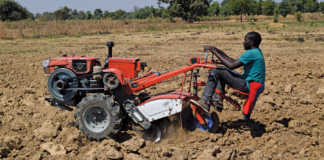
Photo: Lloyd Phillips
Vanessa Collocott raises free-range Pekin ducks for meat on her 20ha smallholding, The Blue Orange Farm, in Curry’s Post, between Mooi River and Howick in KwaZulu-Natal.
Her government-certified, free-range duck production enterprise started with only 60 day-old Pekin ducklings back in 2012. She now farms just over 1 200 ducks at a time, divided into four age groups.
Every fortnight, 300 of her mature ducks are sent to an abattoir, where they slaughter out at about 2,3kg each. She then personally delivers or couriers the frozen carcasses to customers in the Midlands, northern Zululand, and even as far away as Cape Town.
Collocott says she went into duck farming because she wanted a high-turnover enterprise to supplement her husband’s income as a businessman in nearby Pietermaritzburg.

“My research identified that there was a niche for both pasture-raised Pekin ducks and broiler chickens, particularly among higher-end restaurants and lodges. I produce both these poultry meat types on our smallholding.”
She supports ethical and humane farming practices.
Caring for baby chicks
Every two weeks, she collects 320 day-old Pekin ducklings from Kent Farming, where they have been spray-vaccinated against Newcastle disease. This is the last medical treatment her ducks receive before slaughter.
“I choose not to vaccinate or medicate them because I’m trying to keep my production as natural as possible. Fortunately, Pekin ducks are quite hardy, and my flocks have never had any major health problems. It’s a risk I’m aware of and am prepared to take. Any individual ducks that become sick are culled.”
Her day-old ducklings spend their first two weeks in an infrared-lamp-heated brooding enclosure on a floor covered in wood shavings. Here they are fed an ad lib ration of Epol broiler starter crumble, placed near water sources.
To help the ducklings recover from the stress of being transported and placed in a new environment, Collocott and her assistant, Michael Madondo, add a tablespoon of sugar to each water fount to provide the ducklings with added energy for the first three days.
From day four, they get height-adjustable bell drinkers that keep the ducklings from playing in and muddying the drinking water with possible health-threatening contaminants.
From the start of week three, the brooding enclosure is opened to allow the ducklings, now noticeably larger and stronger, access to the farm’s grass-covered expanses and dams.
However, they are still not as resilient as ducklings in the older groups, so they are given the option of eating, drinking and sheltering in the brooding enclosure.
Lifeguards
“For their first few days of being given access to the dams, we have to keep a close eye on the ducklings,” she says.
“While they’re very keen to swim, we have to teach them where the sloping sections are so they can get out safely. Their feathers at this age are not fully waterproof and if a duckling can’t get out, its feathers will eventually become waterlogged, and it will become exhausted and drown.”
From the start of week three, the birds’ rations are changed to De Heus broiler finisher pellets, which they will receive until slaughtering age. Ducklings between three and four weeks old also have ad lib access to this feed from an open-sided brooding enclosure.
Ducklings between five and six weeks and seven and eight weeks old are fed outdoors twice a day, at 7am and 2pm, with each bird receiving 300g.
At five to six weeks of age, ducklings are considered young adults and are moved permanently outdoors. While this flock is now able to freely mingle with those of seven to eight weeks old, Collocott says the groups generally remain noticeably separate from each other on the dams and grass.
This makes it easy for her to herd and confine the oldest flock for capture and loading for travel to the abattoir once they reach slaughter age.
“Ducks that do mingle between age groups can still be told apart visually because the young adults usually have fluffier heads, and their wingtip feathers are slightly yellow compared with the fully white feathers of the mature adults.”
Predators
Predators such as jackal, mongooses and otters are common on the farm. However, the family’s dogs chase most of them away.
In addition, square-mesh fencing, reinforced with chicken mesh, surrounds the homestead and a large portion of the property where the ducks are kept.
Despite these deterrents, some predators, particularly mongooses, are still able to sneak up and make off with an unsuspecting duck.
If they find evidence of an attack, such as a trail of feathers, Collocott and Madondo search the perimeter fence-line for the weak point and block the hole with a sheet of corrugated iron. If the hole cannot be identified, they install portable electric fencing for a few days.
The harmless shock usually deters the predator from entering the property again for a few months.
“On a few occasions over the years, a predator has managed to sneak onto the property and go on a killing frenzy, and I’ve lost up to 50 ducks in one night. These were very disheartening and expensive losses. But we’ve managed to reduce losses to predators to an absolute maximum of 10 ducks per group over its eight week production cycle,” she says.
She also loses some ducks to ill health. If they come across an obviously ill duck, they cull it.
The taste of happiness
Over the years, Collocott has built up her client base on word-of-mouth referrals and trust, due to the consistently good quality of her duck meat. She attributes this to a combination of close management, keeping production as natural as possible, and allowing the ducks to range freely on the farm for most of their lives.
“I firmly believe that a happy duck results in a tasty duck,” she says.
Collocott is the first to admit that raising ducks to slaughter age and weight is not a cheap undertaking.
While she is not prepared to divulge the economics of her duck enterprise, she explains that some of the higher production costs include day-old ducklings at about R15 each; fuel; slaughtering at about R15 per duck; and feed costs.
“To get my ducks to an average slaughtered-out weight of 2,3kg at 52 days old, I have to give each bird between 10kg and 11kg of feed,” she says.
Despite these expenses, her duck enterprise generates a satisfactory profit.
Retailers sell duck for about R80/kg, and these carcasses are most likely imported from Asia without any traceability.
With South Africa’s duck consumers increasingly wanting to know where and how their food was produced, Collocott can provide her clients with this information.
Future growth
Turning to the future, she stresses that she produces ducks only to order, and that even if orders grow, she would keep no more than 1 600 ducks of various ages at any given time.
She fears she will be unable to give a larger number of birds the close management attention they need, and refuses to put money before her ethos of ethical and humane animal production.
As soon as finances allow, she intends having a government-certified Rural Poultry-Class abattoir built on-farm, authorised to slaughter 50 ducks and/ or chickens a day.
Having her own abattoir would save transport and slaughtering costs and give her greater control over the slaughtering process and final carcass quality, says Collocott.
“Every two weeks, I’ll also be able to slaughter the heaviest 50 ducks of each day. This will allow the lighter ducks up to five extra days to put on additional weight before slaughter.
“This is an added advantage for me because my duck carcasses are priced per kilogram,” she says.
Email Vanessa Collocott at [email protected].










